For the 2025 school year, there is 1 public middle school serving 281 students in Western Local School District. This district's average middle testing ranking is 3/10, which is in the bottom 50% of public middle schools in Ohio.
Public Middle School in Western Local School District have an average math proficiency score of 37% (versus the Ohio public middle school average of 47%), and reading proficiency score of 42% (versus the 55% statewide average).
Minority enrollment is 1% of the student body (majority Black), which is less than the Ohio public middle school average of 39% (majority Black).
Overview
This School District
This State (OH)
# Schools
3 Schools
1,244 Schools
# Students
695 Students
562,575 Students
# Teachers
34 Teachers
34,195 Teachers
Student : Teacher Ratio
20:1
20:1
District Rank
Western Local School District, which is ranked within the bottom 50% of all 918 school districts in Ohio (based off of combined math and reading proficiency testing data) for the 2021-2022 school year.
The school district's graduation rate of 90-94% has increased from 85-89% over five school years.
Overall District Rank
#606 out of 929 school districts
(Bottom 50%)
(Bottom 50%)
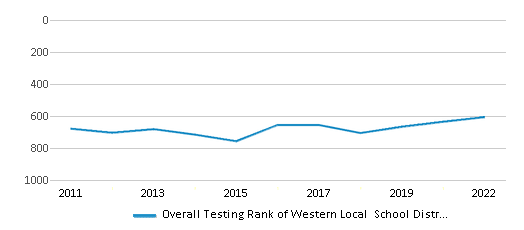
Math Test Scores (% Proficient)
39%
52%
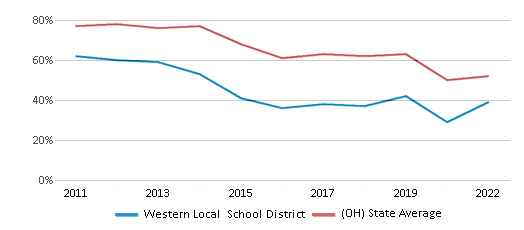
Reading/Language Arts Test Scores (% Proficient)
44%
60%
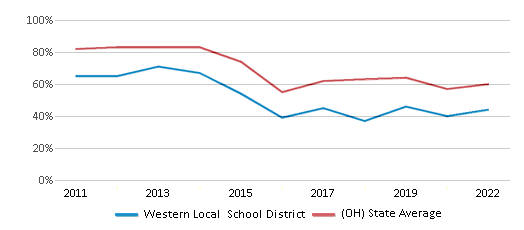
Science Test Scores (% Proficient)
55-59%
63%

Graduation Rate
90-94%
86%
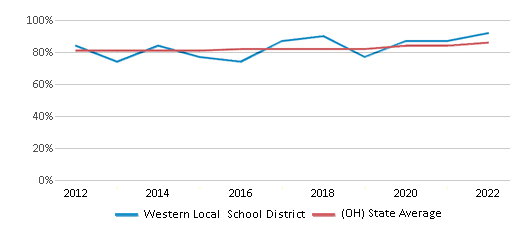
Students by Ethnicity:
Diversity Score
0.03
0.57
# American Indian Students
n/a
880 Students
% American Indian Students
n/a
n/a
# Asian Students
1 Student
12,445 Students
% Asian Students
n/a
2%
# Hispanic Students
1 Student
46,562 Students
% Hispanic Students
n/a
9%
# Black Students
7 Students
124,734 Students
% Black Students
1%
22%
# White Students
685 Students
343,151 Students
% White Students
99%
61%
# Hawaiian Students
n/a
597 Students
% Hawaiian Students
n/a
n/a
# Two or more races Students
1 Student
34,206 Students
% of Two or more races Students
n/a
6%
Students by Grade:
# Students in PK Grade:
44
3,390
# Students in K Grade:
63
15,303
# Students in 1st Grade:
49
14,499
# Students in 2nd Grade:
57
14,677
# Students in 3rd Grade:
48
14,116
# Students in 4th Grade:
47
16,037
# Students in 5th Grade:
53
29,340
# Students in 6th Grade:
53
86,380
# Students in 7th Grade:
53
123,631
# Students in 8th Grade:
42
124,479
# Students in 9th Grade:
57
29,628
# Students in 10th Grade:
57
28,184
# Students in 11th Grade:
32
32,624
# Students in 12th Grade:
40
30,287
# Ungraded Students:
-
-
District Revenue and Spending
The revenue/student of $20,344 is higher than the state median of $17,287. The school district revenue/student has stayed relatively flat over four school years.
The school district's spending/student of $20,492 is higher than the state median of $17,235. The school district spending/student has stayed relatively flat over four school years.
Total Revenue
$14 MM
$28,879 MM

Spending
$14 MM
$28,792 MM
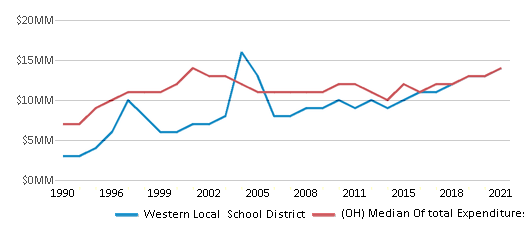
Revenue / Student
$20,344
$17,287
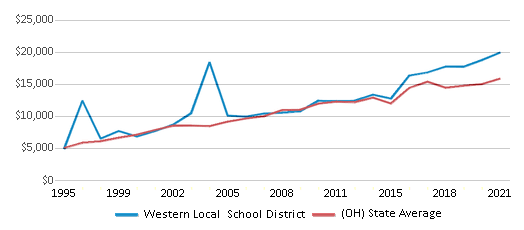
Spending / Student
$20,492
$17,235
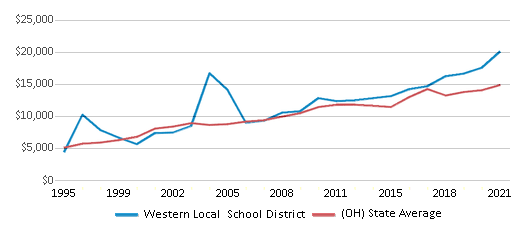
Best Western Local School District Public Middle Schools (2025)
School
(Math and Reading Proficiency)
(Math and Reading Proficiency)
Location
Grades
Students
Rank: #11.
Western High School
(Math: 35-39% | Reading: 40-44%)
Rank:
Rank:
3/
Bottom 50%10
7959 State Route 124
Latham, OH 45646
(740) 493-2514
Latham, OH 45646
(740) 493-2514
Grades: 7-12
| 281 students
Recent Articles

Year-Round Or Traditional Schedule?
Which is more appropriate for your child? A year-round attendance schedule or traditional schedule? We look at the pros and cons.

Why You Should Encourage Your Child to Join a Sports Team
Participating in team sports has a great many benefits for children, there is no doubt. In this article you will learn what those benefits are.

White Students are Now the Minority in U.S. Public Schools
Increasing birth rates among immigrant families from Asia and Central and South America, combined with lower birth rates among white families, means that for the first time in history, public school students in the United States are majority-minority. This shift in demographics poses difficulties for schools as they work to accommodate children of varying language abilities and socio-economic backgrounds.





